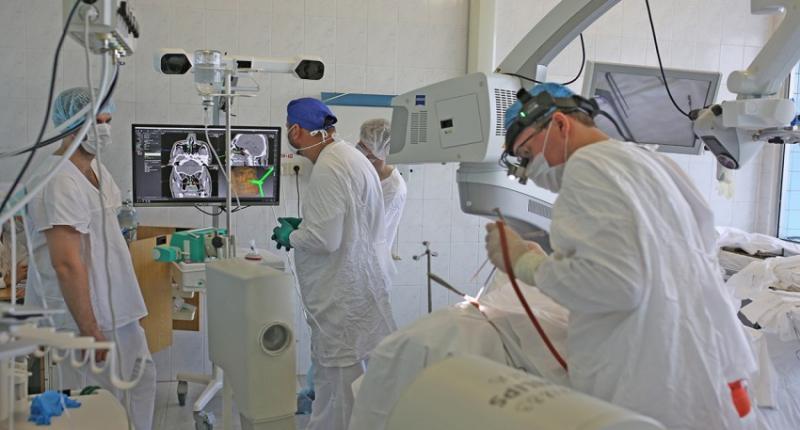Surgical navigation system, also known as image-guided surgery, is a computer-assisted technology that uses advanced imaging scans to help surgeons perform complex surgeries with a high level of accuracy. The surgical navigation systems work by importing pre-operative CT or MRI scans of the patient into a computer software. Surgeons then place tracking sensors or cameras in the operating room that can detect the position of surgical instruments or implants in real-time. By matching the pre-operative scans with the live position of surgical tools, the navigation systems help guide surgeons during delicate procedures.
How does it work?
There are typically three main components involved in a surgical navigation system - tracking system, display system and registration process. The tracking system uses infrared light, electromagnetic fields or other technologies to track the position of reference sensors attached to surgical tools, implants or the patient's anatomy. Sophisticated algorithms continuously calculate the real-time position and orientation data. This spatial data is then overlaid on the pre-operative scans using the display system, which can be headset mounted displays or large screens in the operating room. During registration, fiducial markers on the patient are matched with corresponding points on the CT/MRI scans to fuse the virtual and physical surgical spaces. This allows surgeons to "see inside" the patient on screens and navigate instruments with high precision.
Advantages of Surgical Navigation
One of the main advantages of Surgical Navigation System is improved accuracy and precision during complex procedures. Being able to view pre-operative images overlaid in real-time helps surgeons precisely target tumor sites, fractures or other pathologies. This can lead to minimized risk of injury to nearby critical structures. Navigation also allows for accurate implantation of devices like screws, plates and joints during orthopedic and neurosurgeries. Studies have shown reductions in radiation exposure for surgeons as well as shorter surgical and hospitalization times with navigation-aided surgeries. Advanced navigation capabilities for robotic assisted surgeries further offers advantages like more control, less invasive access and faster recovery times.
Applications in Various Medical Specialties
Neurosurgery has been one of the major beneficiaries of surgical navigation technology. Procedures like deep brain stimulations, craniotomies, biopsy of brain lesions have become much more accurate and safer with navigation guidance. In orthopedics, total joint replacement surgeries of hip, knee and shoulder along with fracture fixations are commonly performed with navigation support. ENT surgeons also rely on navigation for delicate procedures within ear, nose and throat regions. Other applications include spinal, maxillofacial, dental and even cardio-thoracic surgeries to safely guide instruments and implants. Some advanced systems have also enabled Bronchoscopic navigation to identify and access lung nodules with greater ease and control.
Emerging Advancements
Continued R&D is further enhancing the capabilities of surgical navigation technology. Newer options like Augmented Reality are blending virtual assets seamlessly into the live surgical view through headset displays. This allows for a more intuitive 3D experience compared to traditional monitor-based navigation. Integrating robotic arms with navigation is automating certain steps to reduce fatigue and enhance precision. Novel miniaturized sensor technologies are making navigation suitable even for minimally invasive, endoscopic procedures. Advancements in tracking methods using electromagnetic, optical or ultrasound based techniques are improving accuracy in metal-heavy and radiation-filled operating rooms. Faster and more powerful processing capabilities are enabling real-time 3D virtual navigation models with integrated pre-operative data like perfusion mapping. Such emerging innovations are certain to make future surgeries even more precise, efficient and safer for patients.
Surgical navigation systems have transformed complex procedures by providing crucial image guidance support to surgeons. Advancements in tracking, display, integration and computing technologies will continue expanding the applications of navigation across different medical specialties. Combined with robotic assistance, augmented reality and automated features, future navigation solutions promise to deliver unprecedented levels of control, safety and efficiency for surgeons and patients worldwide.
Get more insights on Surgical Navigation System
About Author:
Money Singh is a seasoned content writer with over four years of experience in the market research sector. Her expertise spans various industries, including food and beverages, biotechnology, chemical and materials, defense and aerospace, consumer goods, etc. (https://www.linkedin.com/in/money-singh-590844163)
